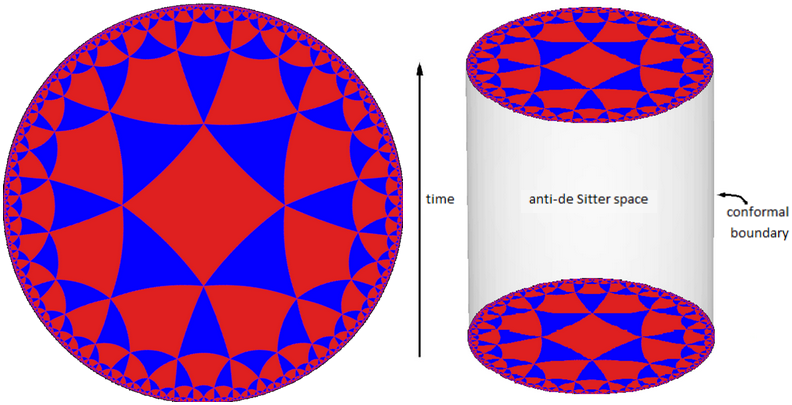I was inspired by comments under this answer to ask this question.
In the context of AdS/CFT, one often finds an embedding diagram of the $10d$ spacetime that I don't find particularly enlightening, showing only the $r$ coordinate of what will be, in the low-$r$-limit AdS, and one angular coordinate of $S^5$:

with the source (N D$_3$-branes) sitting at $r=0$. From what I understand, it shows that, under the influence of N D$_3$-branes, an observer starting from the $\mathbb{M}^{10}$ at $r=\infty$ going towards them, finds that the geometry curves and approaches $AdS_5\times S^5$, but the proper distance to reach $r=0$ (and therefore the $AdS_5\times S^5$ metric) is infinite, so it will never get there but only approach $r=R$. Obviously, the interesting limit is for low $r$, and therefore one studies the AdS metric and its compactification. One then usually finds this other picture:

where the coordinates shown are the time $t$, the compactified radial coordinate $\rho=\arctan(r)$, and one angular coordinate.
Now for the question: dropping the time dependence in the second picture (and possibly the angular coordinates), is there a way to put them together, to see both the "flat-to-AdSxS" behavior and the "AdS-with-boundary"? My best bet is this, but I'm pretty sure it is wrong:
